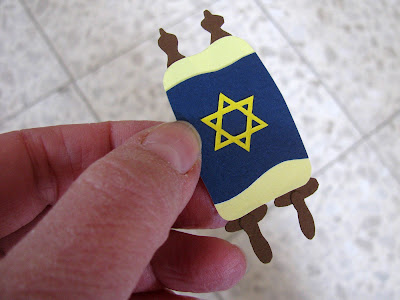The Jerusalem Botanical Gardens are located in the neighbourhood of Nayot in Jerusalem, on the southeastern edge of the Givat Ram campus of the Hebrew University of Jerusalem. The gardens were originally planned as the successor to the
National Botanic Garden of Israel on Mount Scopus, which was established in 1931 and still exists to this day. In 1948, during Israel's War of Independence, access to Mount Scopus and the university campus was cut off from the rest of Israel. It was decided to create new botanical gardens on the new campus of the Hebrew University in Givat Ram in western Jerusalem. The new gardens were opened in 1954, soon after the establishment of the Givat Ram campus.
At around 30 acres, the Jerusalem Botanical Gardens are the largest in Israel. They hold over 6,000 species and varieties of plants from around the world, which are displayed geographically. The 6
phytogeographical sections cover Southern Africa, Europe, North America, Australia, South-West and Central Asia and the Mediterranean. The sections simulate the landscapes of these areas. The gardens' Japanese section contains over 150 bonsai trees, the largest concentrated collection of bonsai trees in the world. The 500 metre long "Bible Path" is planted with most of the 70 species that scientists have identified as some of the 400 types of plants mentioned in the Bible.
The reason for our visit to the gardens was to see the
augmented reality contemporary art exhibition
"Seeing the Invisible", above. It is the first exhibition of its kind to be developed in collaboration with
botanical gardens around the world and is on view simultaneously at twelve
different gardens. The participating gardens all present
the same exhibition, but as the works are augmented into the unique
surroundings and context of each garden, the exhibition is experienced
differently against the backdrop of each location.
The exhibition can only be viewed by visiting the participating gardens and through the "Seeing the Invisible" app on your phone. It features thirteen augmented reality works by established artists from various countries. By setting these digital experiences inside botanical gardens - without disturbing the environment and keeping the carbon footprint to a minimum - the exhibition explores the boundaries and connections between art, technology and nature.
We explored the botanical gardens, locating the artworks scattered throughout them. Several friends had told me that I needed to see the exhibition, so I was hopeful! However, I must admit that Mister Handmade in Israel and I both felt that we were missing out on the real beauty of the gardens because we were so busy focusing on our phones!
We were far more enamoured by the gardens Tropical Conservatory, which was first built in 1985 and reopened to the public in 2019 after a $2 million transformation that took a year and a half. The conservatory boasts approximately 300 kinds of plants - endangered plants, exotic banana trees, coffee plants, orchids and cacti - all differing in shape and colour. It is divided into two regions, the tropical region and the desert region. In the tropical region, the visitor enters a rainforest, complete with tall plants growing on even taller trees. In the desert region, the visitor is exposed to some of the world’s most unique plants and their adaptation to dry conditions. The Tropical Conservatory also houses a stream with aquatic plants growing in it and the remains of an ancient columbarium carved into the rock, dating back to the Second Temple period. The columbarium was exposed at the site during construction. Today its pigeon niches serve as natural beds for
Stapelia, small succulent plants.
The Jerusalem Botanical Gardens also serve as an education, learning and research centre. They focus on nature conservation, education, and community.
The gardens serve as a safe haven for many endangered plants and contain more than three hundred other species of local plants that are endangered or are already extinct in Israel. In addition, the botanical gardens have a large seed collection, which is used for breeding plants in the garden plots and for distribution to botanical gardens around the world.
Cultural events and recreational activities are held at the gardens throughout the year. The Jerusalem Botanical Gardens run a gardening and landscape school, which operates in the botanical gardens. It trains professional gardeners and holds various courses for the general public as well.
The botanical gardens also offer a variety of social and community programs such as therapeutic gardening sessions, occupational rehabilitation, volunteer opportunities, botanical gardeners scholarship programs, guided tours, activities for senior citizens, farming and more.


















































































